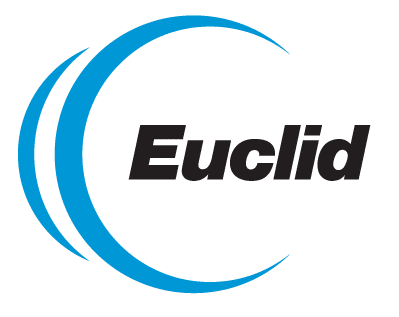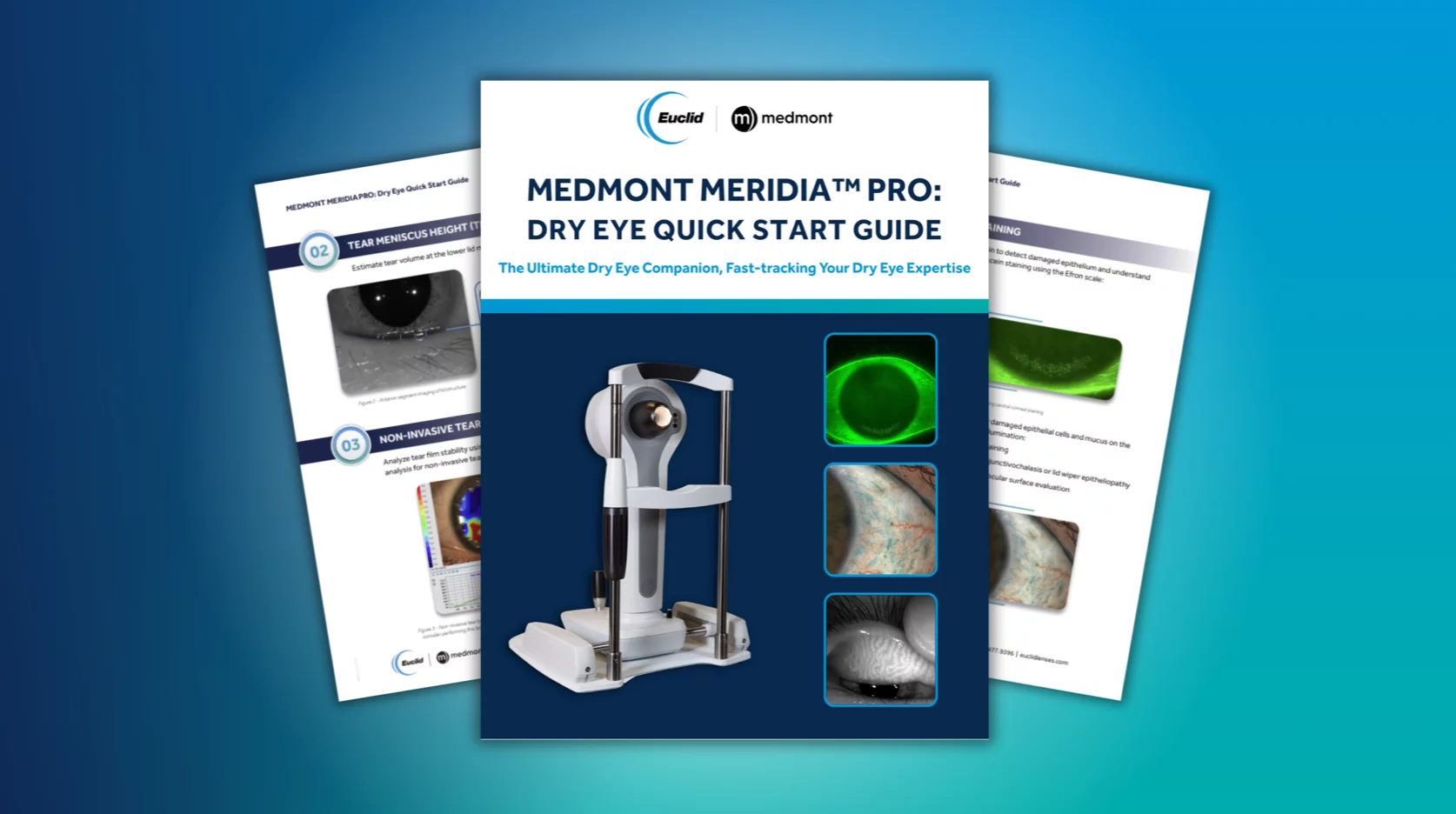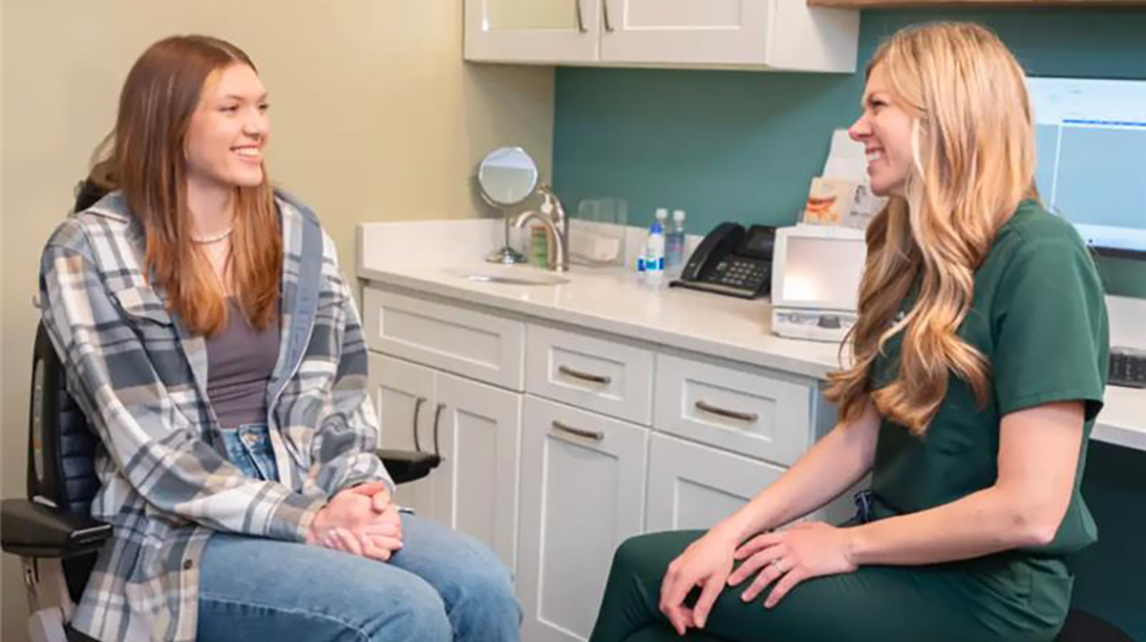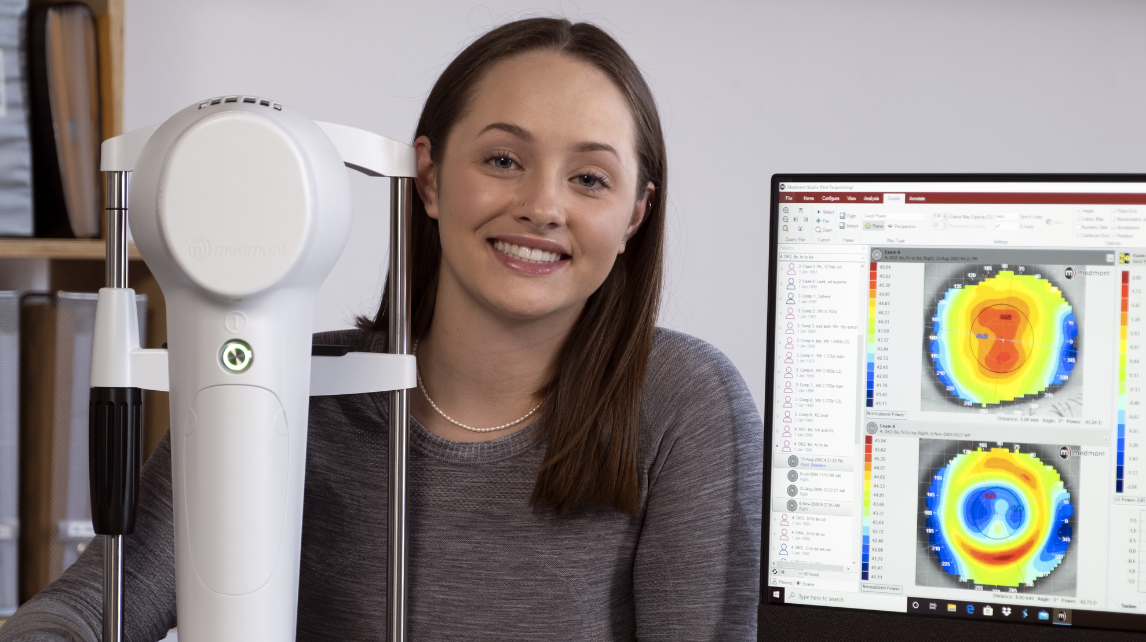Clinical Research Sources
NEW HOMEPAGE
1. Bullimore MA, Liu M. Efficacy of the Euclid orthokeratology lens in slowing axial elongation. Contact Lens and Anterior Eye. 2023;0(0). doi:10.1016/j.clae.2023.101875
CONSUMER | HOMEPAGE
1. Holden BA, Fricke TR, Wilson DA, Jong M, Naidoo KS, Sankaridurg P, Wong TY, Naduvilath TJ, Resnikoff S. Global Prevalence of Myopia and High Myopia and Temporal Trends from 2000 through 2050. Ophthalmology. May 2016;123(5):1036–1042.
2. Lichtwitz, O, M Boissonnot, M Mercie, P Ingrand, and N Leveziel. “Prevalence of Macular Complications Associated with High Myopia by Multimodal Imaging.” Journal Francais d’ophtalmologie 39 (March 22, 2016): 355–63. https://doi.org/10.1016/j.jfo.2015.11.005.
3. Morgan, Ian, He Mingguang, and Kathryn Rose. “Epidemic of Pathologic Myopia.” Retina 0, no. 0 (2016). https://doi.org/doi:10.1097/iae.0000000000001272.
4. “WHO White Paper Impact of Myopia and High Myopia.” World Health Organization, 2016.
5. Yang, Young Seong, and Jae Woong Koh. “Choroidal Blood Flow Change in Eyes with High Myopia.” Korean Journal of Ophthalmology 29, no. 5 (2015): 309. https://doi.org/10.3341/kjo.2015.29.5.309.
6. Holden, Brien A., David A. Wilson, Monica Jong, Padmaja Sankaridurg, Timothy R. Fricke, Earl L. Smith III, and Serge Resnikoff. “Myopia: A Growing Global Problem with Sight-Threatening Complications.” Community Eye Health 28, no. 90 (2015): 35.
7. Newman, C. “Myopia Is a Disease, People!” Contact Lens Spectrum, 2015.
8. Nichols, J, T Aller, D Berntsen, K Gifford, and B O’Connor. “The Truth about Myopia.” Contact Lens Spectrum, 2017.
9. Williams, Katie M, Pirro G Hysi, Abhishek Nag, Ekaterina Yonova-Doing, Cristina Venturini, and Christopher J Hammond. “Age of Myopia Onset in a British Population-Based Twin Cohort.” Ophthalmic and Physiological Optics 33, no. 3 (May 2013): 339–45. https://doi.org/10.1111/opo.12042.
10. Ye, Zimeng, Huaichao Luo, Bo Gong, Ying Lin, Ping Shuai, Pu Wang, Changning Ye, Zhenglin Yang, Wanjun Wang, and Yi Shi. “Evaluation of Four Genetic Variants in Han Chinese Subjects with High Myopia.” Journal of Ophthalmology 2015 (2015): 1–6. https://doi.org/10.1155/2015/729463.
11. Zhang, Xiaoyu, Xinhua Qu, and Xingtao Zhou. “Association between Parental Myopia and the Risk of Myopia in a Child.” Experimental and Therapeutic Medicine, April 8, 2015. https://doi.org/10.3892/etm.2015.2415.
12. Chua, Sharon Yu Lin, M. Kamran Ikram, Chuen Seng Tan, Yung Seng Lee, Yu Ni, Cai Shirong, Peter D. Gluckman, et al. “Relative Contribution of Risk Factors for Early-Onset Myopia in Young Asian Children.” Investigative Opthalmology & Visual Science 56, no. 13 (December 22, 2015): 8101. https://doi.org/10.1167/iovs.15-16577.
13. Manny, Ruth E., G. Lynn Mitchell, Susan A. Cotter, Lisa A. Jones-Jordan, Robert N. Kleinstein, Donald O. Mutti, J. Daniel Twelker, and Karla Zadnik. “Intraocular Pressure, Ethnicity, and Refractive Error:” Optometry and Vision Science, September 2011, 1. https://doi.org/10.1097/OPX.0b013e318230f559.
14. Morgan, Ian G, and Kathryn A Rose. “Myopia and International Educational Performance.” Ophthalmic and Physiological Optics 33, no. 3 (May 2013): 329–38. https://doi.org/10.1111/opo.12040.
15. Mountjoy, Edward, Neil M Davies, Denis Plotnikov, George Davey Smith, Santiago Rodriguez, Cathy E Williams, Jeremy A Guggenheim, and Denize Atan. “Education and Myopia: Assessing the Direction of Causality by Mendelian Randomisation.” BMJ, 2018, 11.
16. Pan, Chen-Wei, Rong-Kun Wu, Jun Li, and Hua Zhong. “Low Prevalence of Myopia among School Children in Rural China.” BMC Ophthalmology 18, no. 1 (December 2018). https://doi.org/10.1186/s12886-018-0808-0.
17. Rose, Kathryn A., Ian G. Morgan, Wayne Smith, George Burlutsky, Paul Mitchell, and Seang-Mei Saw. “Myopia, Lifestyle, and Schooling in Students of Chinese Ethnicity in Singapore and Sydney.” Archives of Ophthalmology 126, no. 4 (2008): 527–530.
18. Saxena, Rohit, Praveen Vashist, Radhika Tandon, R. M. Pandey, Amit Bhardawaj, Vimala Menon, and Kalaivani Mani. “Prevalence of Myopia and Its Risk Factors in Urban School Children in Delhi: The North India Myopia Study (NIM Study).” Edited by Xiangtian Zhou. PLOS ONE 10, no. 2 (February 26, 2015): e0117349. https://doi.org/10.1371/journal.pone.0117349.
19. Wu, Li Juan, Qi Sheng You, Jia Li Duan, Yan Xia Luo, Li Juan Liu, Xia Li, Qi Gao, et al. “Prevalence and Associated Factors of Myopia in High-School Students in Beijing.” PloS One 10, no. 3 (2015): e0120764.
20. Feldkaemper, Marita Pauline, Sandra Bernhard-Kurz, and Frank Schaeffel. “Effects of Early Bright Light Exposure before Myopia Is Induced.” Birmingham, UK: International Myopia Conference, 2017.
21. Hobday, Richard. “Myopia and Daylight in Schools: A Neglected Aspect of Public Health?” Perspectives in Public Health 136, no. 1 (2016): 50–55.
22. Read, Scott A., Michael J. Collins, and Stephen J. Vincent. “Light Exposure and Eye Growth in Childhood.” Investigative Ophthalmology & Visual Science 56, no. 11 (2015): 6779–6787.
23. Tay, Su Ann, Sonal Farzavandi, and Donald Tan. “Interventions to Reduce Myopia Progression in Children.” Strabismus 25, no. 1 (January 2, 2017): 23–32. https://doi.org/10.1080/09273972.2016.1276940.
24. Tse, Dennis Yan-Yin, H Zheng, X Tang, Thomas C Lam, and CH To. “The Interaction of Bright Light and Competing Defocus during Emmetropization in Chicks.” Birmingham, UK: International Myopia Conference, 2017.
25. Wu, Pei-Chang, Chia-Ling Tsai, Hsiang-Lin Wu, Yi-Hsin Yang, and Hsi-Kung Kuo. “Outdoor Activity during Class Recess Reduces Myopia Onset and Progression in School Children.” Ophthalmology 120, no. 5 (May 2013): 1080–85. https://doi.org/10.1016/j.ophtha.2012.11.009.
26. Zadnik, Karla, Loraine T. Sinnott, Susan A. Cotter, Lisa A. Jones-Jordan, Robert N. Kleinstein, Ruth E. Manny, J. Daniel Twelker, and Donald O. Mutti. “Prediction of Juvenile-Onset Myopia.” JAMA Ophthalmology 133, no. 6 (June 1, 2015): 683. https://doi.org/10.1001/jamaophthalmol.2015.0471.
27. Vitale S, Sperduto RD, Ferris FL, 3rd. Increased Prevalence of Myopia in the U.S. between 1971-1972 and 1999-2004. Arch Ophthalmol. 2009 Dec;127(12):1632-9.
28. Bourne, RR, Stevens, GA, White, RA, et al. Causes of vision loss worldwide, 1990–2010: a systematic analysis. The Lancet Global Health. 2013;1:e339–e349.
29. Wong TY, Ferreira A, Hughes R, Carter G, Mitchell P. Epidemiology and disease burden of pathologic myopia and myopic choroidal neovascularization: an evidence-based systematic review. Am J Ophthalmol. 2014;157:9–25.
30. Mika, et al. Safety and efficacy of overnight orthokeratology in myopic children. Optometry. (2007) 78 225-231.
31. Kakita, et al. Influence of overnight orthokeratology on axial elongation in childhood myopia. Invest Ophthalmol Vis Sci (2011) 52 2170-2174.
32. Hiraoka, et al. Long term effect of overnight orthokeratology on axial length elongation in childhood myopia – a 5 year follow up. Invest Ophthalmol Vis Sci (2012) 53 3913-3919.
33. Zhu, et al. The control effect of orthokeratology on axial length in Chinese children with myopia. BMC Ophthalmol (2014) 14 141-150.
34. Lin, et al. Overnight orthokeratology is comparable with atropine in controlling myopia. BMC Ophthalmol (2014) 14 40-48.
35. Sun, et al. Orthokeratology to control myopia progression: A meta-analysis. PLoS One (2015) 10 e0124535.doi:10.1371/journal.pone.0124535.
36. Davis, et al. Stabilizing myopia by accelerating reshaping technique (SMART) study – Three year outcomes and overview. Adv Ophthalmol Vis Sci (2015) 2 46-54.
37. Chen, et al. Effects of orthokeratology on axial length growth in myopic anisometropes. Cont Lens Ant Eye (2018) 41 263-266.
CONSUMER | MYOPIA EPIDEMIC
1. Wong TY, Ferreira A, Hughes R, Carter G, Mitchell P. Epidemiology and disease burden of pathologic myopia and myopic choroidal neovascularization: an evidence-based systematic review. Am J Ophthalmol. 2014;157:9–25.
2. Holden BA, Fricke TR, Wilson DA, Jong M, Naidoo KS, Sankaridurg P, Wong TY, Naduvilath TJ, Resnikoff S. Global Prevalence of Myopia and High Myopia and Temporal Trends from 2000 through 2050. Ophthalmology. May 2016;123(5):1036–1042.
3. Morgan IG, Ohno-Matsui K, Saw SM. Myopia. Lancet. 2012;379:1739-48.
4. Vitale S, Sperduto RD, Ferris FL, 3rd. Increased Prevalence of Myopia in the U.S. between 1971-1972 and 1999-2004. Arch Ophthalmol. 2009 Dec;127(12):1632-9.
CONSUMER | FAQ
1. Davis, R. L., S. B. Eiden, S.B., E. S. Bennett, B. Koffler, L. Wohl, and M. Lipson. “Stabilizing Myopia by Accelerating Reshaping Technique (SMART)-Study Three Year Outcomes and Overview.” Advances in Ophthalmology & Visual System 2, no. 3 (2015): 8.
2. Mika, R, B Morgan, M Cron, J Lotoczky, and J Pole. “Safety and Efficacy of Overnight Orthokeratology in Myopic Children.” Optometry: Journal of the American Optometric Association 78, no. 5 (2007): 225-31. https://doi.org/10.1016/j.optm.2006.12.013.
3. Bullimore, M, L Sinnott, and L Jones-Jordan. “The Risk of Microbial Keratitis With Overnight Corneal Reshaping Lenses.” Optometry & Vision Science 90, no. 9 (2013): 937-44. https://doi.org/10.1097/opx.0b013e31829cac92.
4. Liu, Yue M., and Peiying Xie. “The Safety of Orthokeratology—A Systematic Review:” Eye & Contact Lens: Science & Clinical Practice 42, no. 1 (January 2016): 35-42. https://doi.org/10.1097/ICL.0000000000000219.
5. Santodomingo-Rubido, Jacinto, César Villa-Collar, Bernard Gilmartin, and Ramón Gutiérrez-Ortega. “Orthokeratology vs. Spectacles: Adverse Events and Discontinuations.” Optometry & Vision Science 89, no. 8 (2012): 1133-1139.
6. Van Meter, W, D Musch, D Jacobs, S Kaufman, W Reinhart, and I Udell. “Safety of Overnight Orthokeratology for Myopia.” Ophthalmology 115, no. 12 (2008): 2301-13. https://doi.org/10.1016/j.ophtha.2008.06.034.
7. Walline, J, M Rah, and L Jones. “COOKI: The Children’s Overnight Orthokeratology Investigation Pilot Study.” Optometry & Vision Science 81, no. 6 (2004): 407-13. https://doi.org/10.1097/01.opx.0000135093.77007.18.
8. Santodomingo-Rubido, Jacinto, César Villa-Collar, Bernard Gilmartin, and Ramón Gutiérrez-Ortega. “Short-Term Changes in Ocular Biometry and Refraction After Discontinuation of Long-Term Orthokeratology:” Eye & Contact Lens: Science & Clinical Practice 40, no. 2 (March 2014): 84-90. https://doi.org/10.1097/ICL.0000000000000014.
9. Charm, Jessie, and Pauline Cho. “High Myopia–Partial Reduction Ortho-k: A 2-Year Randomized Study.” Optometry & Vision Science 90, no. 6 (2013): 530-539.
10. Chen, Connie, Sin Wan Cheung, and Pauline Cho. “Myopia Control Using Toric Orthokeratology (TO-SEE Study).” Investigative Opthalmology & Visual Science 54, no. 10 (October 3, 2013): 6510. https://doi.org/10.1167/iovs.13-12527.
11. Cho, Pauline, and Sin-Wan Cheung. “Protective Role of Orthokeratology in Reducing Risk of Rapid Axial Elongation: A Reanalysis of Data From the ROMIO and TO-SEE Studies.” Investigative Opthalmology & Visual Science 58, no. 3 (March 2, 2017): 1411. https://doi.org/10.1167/iovs.16-20594.
12. Cho, P and Cheung, S. “Retardation of Myopia in Orthokeratology (ROMIO) Study: A 2-Year Randomized Clinical Trial.” Investigative Opthalmology & Visual Science 53, no. 11 (October 11, 2012): 7077. https://doi.org/10.1167/iovs.12-10565.
13. Downie, Laura E., and Russell Lowe. “Corneal Reshaping Influences Myopic Prescription Stability (CRIMPS): An Analysis of the Effect of Orthokeratology on Childhood Myopic Refractive Stability.” Eye & Contact Lens: Science & Clinical Practice 39, no. 4 (July 2013): 303-10. https://doi.org/10.1097/ICL.0b013e318298ee76.
14. He, Mengmei, Yaru Du, Qingyu Liu, Chengda Ren, Junling Liu, Qianyi Wang, Li Li, and Jing Yu. “Effects of Orthokeratology on the Progression of Low to Moderate Myopia in Chinese Children.” BMC Ophthalmology 16, no. 1 (December 2016). https://doi.org/10.1186/s12886-016-0302-5.
15. Hiraoka, Takahiro, Tetsuhiko Kakita, Fumiki Okamoto, Hideto Takahashi, and Tetsuro Oshika. “Long-Term Effect of Overnight Orthokeratology on Axial Length Elongation in Childhood Myopia: A 5-Year Follow-Up Study.” Investigative Opthalmology & Visual Science 53, no. 7 (June 25, 2012): 3913. https://doi.org/10.1167/iovs.11-8453.
16. Mok, Alan. “Seven-Year Retrospective Analysis of the Myopic Control Effect of Orthokeratology in Children: A Pilot Study.” Clinical Optometry, February 2011, 1. https://doi.org/10.2147/OPTO.S16599.
17. Santodomingo-Rubido, Jacinto, César Villa-Collar, Bernard Gilmartin, and Ramón Gutiérrez-Ortega. “Myopia Control with Orthokeratology Contact Lenses in Spain: Refractive and Biometric Changes.” Investigative Opthalmology & Visual Science 53, no. 8 (July 31, 2012): 5060. https://doi.org/10.1167/iovs.11-8005.
18. Zhu, M, H Feng, X He, H Zou, and J Zhu. “The Control Effect of Orthokeratology on Axial Length Elongation in Chinese Children with Myopia.” BMC Ophthalmology 14, no. 1 (2014): 141. https://doi.org/10.1186/1471-2415-14-141.
19. González-Méijome, José M., Sofia C. Peixoto-de-Matos, Miguel Faria-Ribeiro, Daniela P. Lopes-Ferreira, Jorge Jorge, Jerry Legerton, and Antonio Queiros. “Strategies to Regulate Myopia Progression With Contact Lenses: A Review.” Eye & Contact Lens: Science & Clinical Practice 42, no. 1 (January 2016): 24-34. https://doi.org/10.1097/ICL.0000000000000100.
20. Huang, J, D Wen, and Q Wang. “Efficacy Comparison of 16 Interventions for Myopia Control in Children.” Ophthalmology 123, no. 4 (2016): 697-708. https://doi.org/10.1016/j.ophtha.2015.11.010.
21. Walline, Jeffrey J. “Myopia Control: A Review.” Eye & Contact Lens: Science & Clinical Practice 42, no. 1 (January 2016): 3-8. https://doi.org/10.1097/ICL.0000000000000207.
22. Wen, D, J Huang, and H Chen. “Efficacy and Acceptability of Orthokeratology for Slowing Myopic Progression in Children: A Systematic Review and Meta-Analysis.” Journal of Ophthalmology, 2015, 1-12. https://doi.org/10.1155/2015/360806.
23. Bullimore, M., and L. Johnson. “Overnight Orthokeratology.” Contact Lens and Anterior Eye, 43 (2020): 322-332.
24. Euclid Systems Orthokeratology Contact Lenses for Overnight Wear – Instructions for Use.
PRACTITIONER | HOMEPAGE
1. McAlinden C, Lipson MJ. Orthokeratology and Contact Lens Quality of Life Questionnaire (OCL-QoL). Eye Contact Lens. 2018 Sep;4Hir4:279-285.
PRACTITIONER | MYOPIA EPIDEMIC
1. Holden BA, Fricke TR, Wilson DA, Jong M, Naidoo KS, Sankaridurg P, Wong TY, Naduvilath TJ, Resnikoff S. Global Prevalence of Myopia and High Myopia and Temporal Trends from 2000 through 2050. Ophthalmology. May 2016;123(5):1036–1042.
2. Vitale S, Sperduto RD, Ferris FL, 3rd. Increased Prevalence of Myopia in the U.S. between 1971-1972 and 1999-2004. Arch Ophthalmol. 2009 Dec;127(12):1632-9.
3. Morgan, I.G., Ohno-Matsui, K., and Saw, S.M. Myopia. Lancet. 2012; 379: 1739–1748
4. Mitchell P, Hourihan F, Sandbach J, Wang JJ. The relationship between glaucoma and myopia: the Blue Mountains Eye Study. Ophthalmology. 1999;106:2010-5.
5. Younan C, Mitchell P, Cumming RG, Rochtchina E, Wang JJ. Myopia and incident cataract and cataract surgery: The BlueMountains eye study. Investigative ophthalmology & visual science 2002;43:3625-32.
6. Group TEDC-CS. Risk factors for idiopathic rhegmatogenous retinal detachment. The Eye Disease Case-Control Study Group. American Journal of Epidemiology 1993;137:749-57.
PRACTITIONER | WHY EUCLID LENSES?
1. Davis, et al. Stabilizing myopia by accelerating reshaping technique (SMART) study – Three year outcomes and overview. Adv Ophthalmol Vis Sci (2015) 2 46-54.
2. Mika et al. Safety and efficacy of overnight orthokeratology in myopic children. Optometry. (2007) 78 225-231.
3. Kakita et al. Influence of overnight orthokeratology on axial elongation in childhood myopia. Invest Ophthalmol Vis Sci (2011) 52 2170-2174.
4. Hiraoka et al. Long term effect of overnight orthokeratology on axial length elongation in childhood myopia – a 5 year follow up. Invest Ophthalmol Vis Sci (2012) 53 3913-3919.
5. Zhu, et al. The control effect of orthokeratology on axial length in Chinese children with myopia. BMC Ophthalmol (2014) 14 141-150.
6. Lin, et al. Overnight orthokeratology is comparable with atropine in controlling myopia. BMC Ophthalmol (2014) 14 40-48.
7. Sun, et al. Orthokeratology to control myopia progression: A meta-analysis. PLoS One (2015) 10 e0124535.doi:10.1371/journal.pone.0124535.
8. Chen, et al. Effects of orthokeratology on axial length growth in myopic anisometropes. Cont Lens Ant Eye (2018) 41 263-266.
9. Davis R, Eiden B, Bennett E, Koffler B, Wohl L, Lipson M. Stabilizing Myopia by Accelerating Reshaping Technique (SMART)-Study Three Year Outcomes and Overview. Advances in Ophthalmology & Visual System. 2015;2(3).
10. Long-Term Effect of Overnight Orthokeratology on Axial Length Elongation in Childhood Myopia: A 5 Year Follow-Up Study. Invest.Opthalmol. Vis. Sci. Hiraota et. al., June 25, 2012 vol. 53 no.7 3913-3919.
PRACTITIONER | YOUR PRACTICE
1.Hale L, Guan S. Screen time and sleep among school-aged children and adolescents: A systematic literature review. Sleep Med Rev. 2015;21:50-58. doi:10.1016/j.smrv.2014.07.007
PRACTITIONER | MEDMONT MERIDIA CORNEAL TOPOGRAPHER
*Using KATT BE Free Ortho-K designs in Hong-Kong Studies: Tan 2019, Orthokeratology, Guo 2021, Orthokeratology
PRACTITIONER | EDUCATION
1. Mutti DO, Hayes JR, Mitchell GL, et al. Refractive Error, Axial Length, and Relative Peripheral Refractive Error before and after the Onset of Myopia. Invest Ophthalmol Vis Sci. 2007;48(6):2510-2519. doi:10.1167/iovs.06-0562
2. Sanz Diez P, Yang LH, Lu MX, Wahl S, Ohlendorf A. Growth curves of myopia-related parameters to clinically monitor the refractive development in Chinese schoolchildren. Graefes Arch Clin Exp Ophthalmol. 2019;257(5):1045-1053. doi:10.1007/s00417-019-04290-6
3. Wolffsohn JS, Kollbaum PS, Berntsen DA, et al. IMI – Clinical Myopia Control Trials and Instrumentation Report. Invest Ophthalmol Vis Sci. 2019;60(3):M132-M160. doi:10.1167/iovs.18-25955
4. Chen C, Cheung SW, Cho P. Myopia Control Using Toric Orthokeratology (TO-SEE Study). Investig Ophthalmology Vis Sci. 2013;54(10):6510. doi:10.1167/iovs.13-12527.
5. Maseedupally VK, Gifford P, Lum E, et al. Treatment Zone Decentration During Orthokeratology on Eyes with Corneal Toricity. Optom Vis Sci. 2016;93(9):1101-1111.
6. Lipson MJ. Contemporary OrthoKeratology. (https://contemporaryorthokeratology.com/). 2019.
7. Kojima R, Caroline P, et al. Should all orthokeratology lenses be toric? Poster presented at the 2016 GSLS, Jan. 2016, Las Vegas.
PRACTITIONER | FAQ
1. Davis, R. L., S. B. Eiden, E. S. Bennett, B. Koffler, L. Wohl, and M. Lipson. “Stabilizing Myopia by Accelerating Reshaping Technique (SMART)-Study Three Year Outcomes and Overview.” Advances in Ophthalmology & Visual System 2, no. 3 (2015): 8.
2. Mika, R, B Morgan, M Cron, J Lotoczky, and J Pole. “Safety and Efficacy of Overnight Orthokeratology in Myopic Children.” Optometry: Journal of the American Optometric Association 78, no. 5 (2007): 225-31. https://doi.org/10.1016/j.optm.2006.12.013.
3. Bullimore, M, L Sinnott, and L Jones-Jordan. “The Risk of Microbial Keratitis With Overnight Corneal Reshaping Lenses.” Optometry & Vision Science 90, no. 9 (2013): 937-44. https://doi.org/10.1097/opx.0b013e31829cac92.
4. Liu, Yue M., and Peiying Xie. “The Safety of Orthokeratology—A Systematic Review:” Eye & Contact Lens: Science & Clinical Practice 42, no. 1 (January 2016): 35-42. https://doi.org/10.1097/ICL.0000000000000219.
5. Santodomingo-Rubido, Jacinto, César Villa-Collar, Bernard Gilmartin, and Ramón Gutiérrez-Ortega. “Orthokeratology vs. Spectacles: Adverse Events and Discontinuations.” Optometry & Vision Science 89, no. 8 (2012): 1133-1139.
6. Van Meter, W, D Musch, D Jacobs, S Kaufman, W Reinhart, and I Udell. “Safety of Overnight Orthokeratology for Myopia.” Ophthalmology 115, no. 12 (2008): 2301-13. https://doi.org/10.1016/j.ophtha.2008.06.034.
7. Walline, J, M Rah, and L Jones. “COOKI: The Children’s Overnight Orthokeratology Investigation Pilot Study.” Optometry & Vision Science 81, no. 6 (2004): 407-13. https://doi.org/10.1097/01.opx.0000135093.77007.18.
8. Santodomingo-Rubido, Jacinto, César Villa-Collar, Bernard Gilmartin, and Ramón Gutiérrez-Ortega. “Short-Term Changes in Ocular Biometry and Refraction After Discontinuation of Long-Term Orthokeratology:” Eye & Contact Lens: Science & Clinical Practice 40, no. 2 (March 2014): 84–90. https://doi.org/10.1097/ICL.0000000000000014.
9. Bullimore MA, Liu M. Efficacy of the Euclid orthokeratology lens in slowing axial elongation. Contact Lens and Anterior Eye. 2023;0(0).
10. Charm, Jessie, and Pauline Cho. “High Myopia–Partial Reduction Ortho-k: A 2-Year Randomized Study.” Optometry & Vision Science 90, no. 6 (2013): 530-539.
11. Chen, Connie, Sin Wan Cheung, and Pauline Cho. “Myopia Control Using Toric Orthokeratology (TO-SEE Study).” Investigative Opthalmology & Visual Science 54, no. 10 (October 3, 2013): 6510. https://doi.org/10.1167/iovs.13-12527.
12. Cho, Pauline, and Sin-Wan Cheung. “Protective Role of Orthokeratology in Reducing Risk of Rapid Axial Elongation: A Reanalysis of Data From the ROMIO and TO-SEE Studies.” Investigative Opthalmology & Visual Science 58, no. 3 (March 2, 2017): 1411. https://doi.org/10.1167/iovs.16-20594.
13. Cho, P and Cheung, S. “Retardation of Myopia in Orthokeratology (ROMIO) Study: A 2-Year Randomized Clinical Trial.” Investigative Opthalmology & Visual Science 53, no. 11 (October 11, 2012): 7077. https://doi.org/10.1167/iovs.12-10565.
14. Downie, Laura E., and Russell Lowe. “Corneal Reshaping Influences Myopic Prescription Stability (CRIMPS): An Analysis of the Effect of Orthokeratology on Childhood Myopic Refractive Stability.” Eye & Contact Lens: Science & Clinical Practice 39, no. 4 (July 2013): 303-10. https://doi.org/10.1097/ICL.0b013e318298ee76.
15. He, Mengmei, Yaru Du, Qingyu Liu, Chengda Ren, Junling Liu, Qianyi Wang, Li Li, and Jing Yu. “Effects of Orthokeratology on the Progression of Low to Moderate Myopia in Chinese Children.” BMC Ophthalmology 16, no. 1 (December 2016). https://doi.org/10.1186/s12886-016-0302-5.
16. Hiraoka, Takahiro, Tetsuhiko Kakita, Fumiki Okamoto, Hideto Takahashi, and Tetsuro Oshika. “Long-Term Effect of Overnight Orthokeratology on Axial Length Elongation in Childhood Myopia: A 5-Year Follow-Up Study.” Investigative Opthalmology & Visual Science 53, no. 7 (June 25, 2012): 3913. https://doi.org/10.1167/iovs.11-8453.
17. Mok, Alan. “Seven-Year Retrospective Analysis of the Myopic Control Effect of Orthokeratology in Children: A Pilot Study.” Clinical Optometry, February 2011, 1. https://doi.org/10.2147/OPTO.S16599.
18. Santodomingo-Rubido, Jacinto, César Villa-Collar, Bernard Gilmartin, and Ramón Gutiérrez-Ortega. “Myopia Control with Orthokeratology Contact Lenses in Spain: Refractive and Biometric Changes.” Investigative Opthalmology & Visual Science 53, no. 8 (July 31, 2012): 5060. https://doi.org/10.1167/iovs.11-8005.
19. Zhu, M, H Feng, X He, H Zou, and J Zhu. “The Control Effect of Orthokeratology on Axial Length Elongation in Chinese Children with Myopia.” BMC Ophthalmology 14, no. 1 (2014): 141. https://doi.org/10.1186/1471-2415-14-141.
20. González-Méijome, José M., Sofia C. Peixoto-de-Matos, Miguel Faria-Ribeiro, Daniela P. Lopes-Ferreira, Jorge Jorge, Jerry Legerton, and Antonio Queiros. “Strategies to Regulate Myopia Progression With Contact Lenses: A Review.” Eye & Contact Lens: Science & Clinical Practice 42, no. 1 (January 2016): 24-34. https://doi.org/10.1097/ICL.0000000000000100.
21. Huang, J, D Wen, and Q Wang. “Efficacy Comparison of 16 Interventions for Myopia Control in Children.” Ophthalmology 123, no. 4 (2016): 697-708. https://doi.org/10.1016/j.ophtha.2015.11.010.
22. Walline, Jeffrey J. “Myopia Control: A Review.” Eye & Contact Lens: Science & Clinical Practice 42, no. 1 (January 2016): 3-8. https://doi.org/10.1097/ICL.0000000000000207.
23. Wen, D, J Huang, and H Chen. “Efficacy and Acceptability of Orthokeratology for Slowing Myopic Progression in Children: A Systematic Review and Meta-Analysis.” Journal of Ophthalmology, 2015, 1-12. https://doi.org/10.1155/2015/360806.




